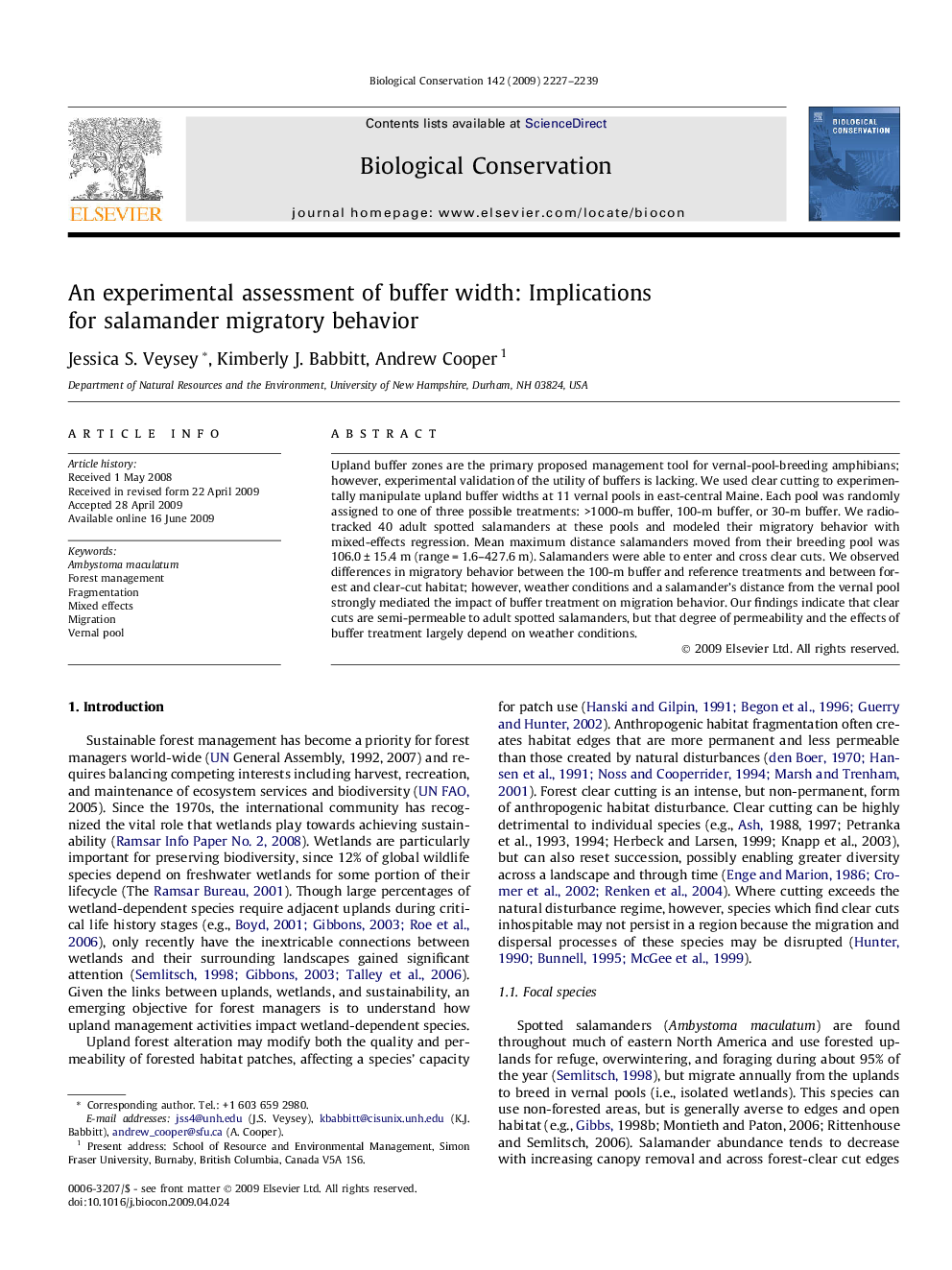| Article ID | Journal | Published Year | Pages | File Type |
|---|---|---|---|---|
| 4386218 | Biological Conservation | 2009 | 13 Pages |
Upland buffer zones are the primary proposed management tool for vernal-pool-breeding amphibians; however, experimental validation of the utility of buffers is lacking. We used clear cutting to experimentally manipulate upland buffer widths at 11 vernal pools in east-central Maine. Each pool was randomly assigned to one of three possible treatments: >1000-m buffer, 100-m buffer, or 30-m buffer. We radiotracked 40 adult spotted salamanders at these pools and modeled their migratory behavior with mixed-effects regression. Mean maximum distance salamanders moved from their breeding pool was 106.0 ± 15.4 m (range = 1.6–427.6 m). Salamanders were able to enter and cross clear cuts. We observed differences in migratory behavior between the 100-m buffer and reference treatments and between forest and clear-cut habitat; however, weather conditions and a salamander’s distance from the vernal pool strongly mediated the impact of buffer treatment on migration behavior. Our findings indicate that clear cuts are semi-permeable to adult spotted salamanders, but that degree of permeability and the effects of buffer treatment largely depend on weather conditions.
